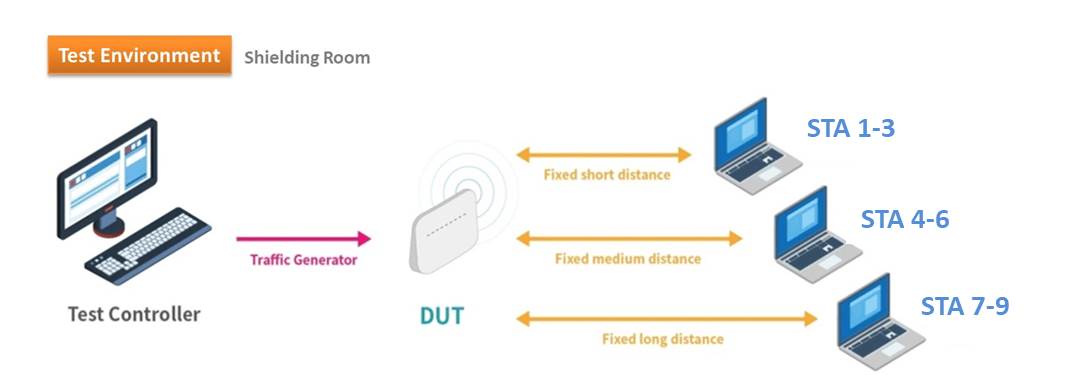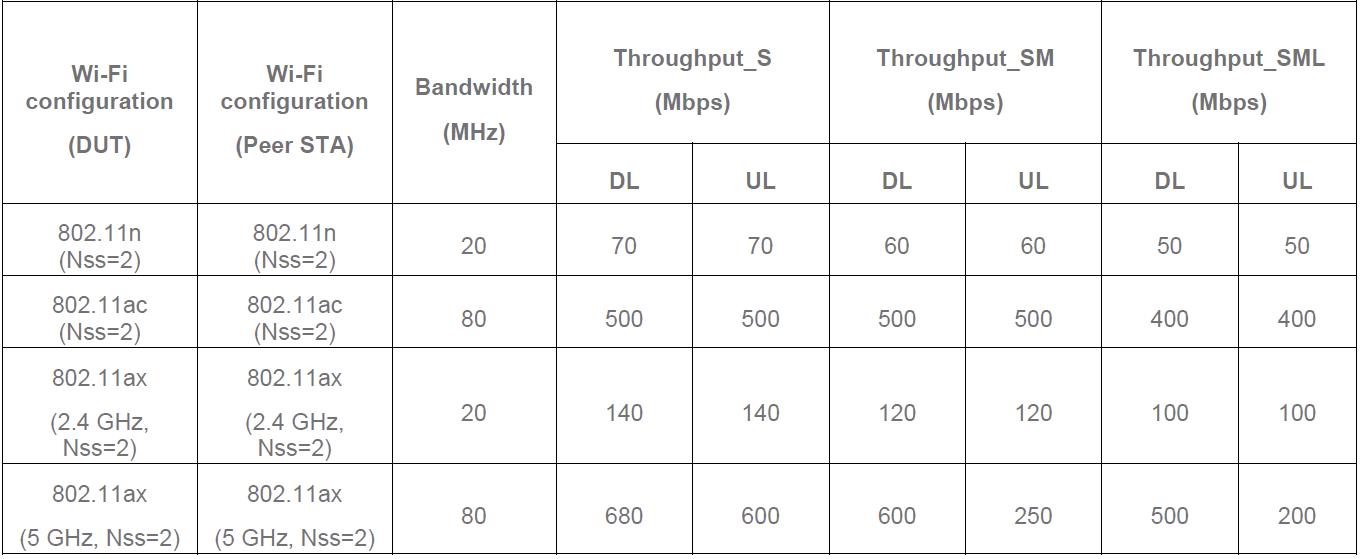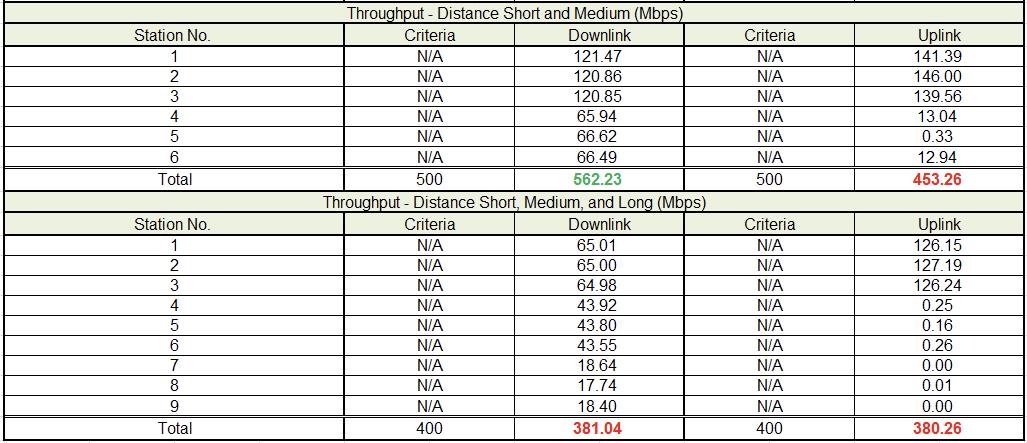Allion Labs

After the discussion of the Spatial Consistency Test, this time around we will discuss the 6.4.1 Multiple STAs Performance Test, one of the most challenging for manufacturers.
Test Summary
The 6.4.1 Multiple STAs Performance Test divides the 9 devices into three groups: short distance (strong signal), medium distance (medium signal), and long distant (weak signal). While checking the overall transmission is not considerably affected, we set up the 9 connected devices to simultaneously transmit signals. Placing the AP at a distance of 2 meters from all connected devices, we use the attenuator to simulate three different distances with low, medium, and high attenuation. We then measure the total uplink and downlink transmission throughput in each of the cases below:
- Short distant devices (total of 3 devices);
- Short and medium distant devices (total of 6 devices); and
- Short, medium, and long distant devices (total of 9 devices).
This test examines whether total transmission throughput decreases owing to the long distant devices when the AP is connected to devices at different signal strengths, making for a difficult test to conduct.
Test Standards
For different wireless modes and transmission directions, the total transmission throughput of each test setup must meet the standards set by the Broadband Forum, as follows:

6.4.1 Multiple STAs Performance Test Transmission Throughput Standards
S stands for short distance, M for medium distance, and L for long distance.
Common Problems
In the 6.4.1 Multiple STAs Performance Test, most APs pass the standard easily when device transmission has a strong signal (low attenuation), simulating a device at a short distance (with additional attenuation of 10dB).
Since an AP needs to spend more time connecting with devices with weaker signals, we can thus conclude that overall transmission throughput drops when there are devices connected through weak signals.
The test results below indicate that the uplink throughput performance of the further devices was already affected for short and medium distant setups. When adding in the long distant devices, the overall performance drops even further, with medium and weak signal device throughput dropping below 1 Mbps, causing the overall transmission to drop.

6.4.1 Multiple STAs Performance Test Results
Test Suggestions
From experience, we realized that the 6.4.1 Multiple STAs Performance Test is closely related to the 6.2.3 Airtime Fairness Test. When wireless devices connect to APs, high connection quality results in high MCS and high transmission speed. Conversely, low-quality connection results in low MCS and low transmission speed. Airtime Fairness is an optimization technique that prioritizes devices with high-quality connection, MCS, and transmission speed over devices with lower-quality connection, MCS, and transmission speed. In doing so, the AP distributes wireless connectivity unevenly when connected to many devices of varied connection qualities.
In the 6.4.1 Multiple STAs Performance Test, the medium-distant and long-distant devices exhibit weaker signals and lower MCS as the distance is increased. The AP must spend time processing the transmission from low MCS devices, bringing down even the transmission from high MCS devices and the AP’s overall transmission performance.
Therefore, we suggest our clients utilize the Airtime Fairness Test to help when encountering problems in the 6.4.1 Multiple STAs Performance Test.
With years of test experience, Allion Labs not only provides customized test services that correspond with user scenarios but also provides customers with professional market evaluation and competitive analysis reports to improve product performance and improve user experience. Our goal is to assist major manufacturers to grow their brand reputation and seize market opportunities in the fierce product competition.
If you have wireless testing needs, feel free to contact us by contact form or email.

































